90 degrees F
Partly Sunny, Calm
Finally cooler winds swept across the valley floor and some relief arrived for the jardin. A week after the previous post, two-thirds of an inch of rain fell and one could almost hear the plants sighing. It was brief respite from the heat but most welcome. Our Heirloom Produce Saturdays have been great fun and a wonderful opportunity to meet visitors, share produce, recipes, gardening stories and the continued harvest of eggplants, scallop squashes, and watermelons.
But with exasperation, I must note the recent resurgence of heat with no new rain. The days are nearing September, late summer chores continue-heirloom beets, carrots, lettuce, radish and turnip seeds were planted, while the compost was turned and new materials were added. As a sad tune to this summer’s meter, most time spent in the jardin once again have been focused on watering and controlling weeds. Some of the seeds have emerged but a few beds had to be reseeded due to the lack of germination. The melons and squash still produce, but fewer fruit have been set.
Raccoons manage to slip into the garden overnight and sample the few remaining ripening French melons, very frustrating! The open rinds lay in the bed and scooped clean of any trace of melon except for the seed. The red seeded citron watermelons litter the melon bed intact, the rind being too hard for raccoon mischief. These melons are strong survivors to the trials of our summer. The citron melon was preserved following the recipe posted last month on the recettes page and the result was surprisingly lovely-the marmalade flavors of ginger and lemon combined with sweetened melon. The result is a marmalade piquancy without the bite. Melon preserves will be a wonderful accompaniment to meals and tart fillings this winter. As these melons are not eaten fresh, they will keep months in the cellar and can be processed as the fall season slows work in the gardens. No wonder citron melons were widely grown, even though they take a bit of work to prepare.
Looking about the garden, we do not wish the summer season to be at an end–still hoping to be blessed with cooler temperatures and rain. Time is needed for seeds to grow and then, as the promise of the fall garden beckons, the tastes and pleasures of the upcoming autumn will be ours to explore.
11 August, Thursday
86 degrees F
Sunny, Light S winds
While enduring the heat and the lack of rain these past weeks, the lyrics from a traditional harvest song keep echoing in my mind -“The summer is a tyrant of a most ungracious kind.” No truer words express this past August in our jardin. The unrelenting sun made the work of clearing the garden of spent summer plants and weeds even more challenging than usual. So much of the time upon arrival involved watering, harvesting, and feeding plants, nurturing and protecting the crops against the burning rays. The melons and summer squash are producing, even thriving, in this August heat while the cucumbers are struggling to set fruit.
It was a relief to observe the leeks and eggplants still growing and the new planting of native Potawatomie lima beans beginning to twine around the base of their poles. Once again, friends Antoinette and Renea stepped forward several times this month, helping with the thankless tasks of digging and clearing beds. Forgotten carrots and turnips are discovered and are fed to the chickens, while the weeds are pulled and beds are prepared for planting.
The ticking seasonal clock waits on no one and as soon as the weather breaks, seeds will be planted for the fall season. New to the jardin this month, Heirloom Produce Saturdays. On our first Saturday, we had a few visitors brave the 90 degree heat and sample the Moir de Carmes, Charentais, Missouri Heirloom, Georgia Rattlesnake melons. We gave away some melons and squash and shared recipes. We hoped for cooler temps the upcoming Saturday, and more new friends to visit and share our jardin produce.
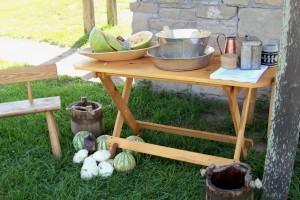
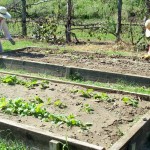
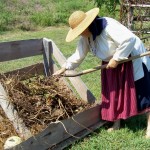
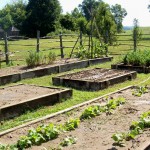
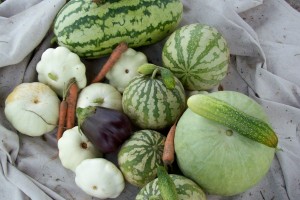
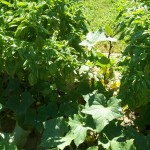
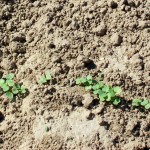
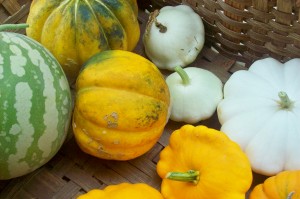
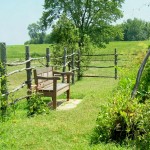
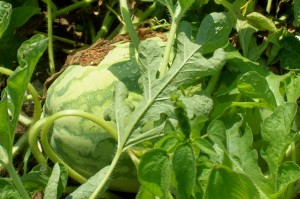
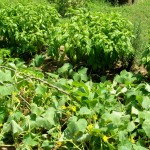
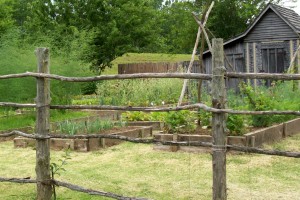
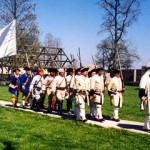
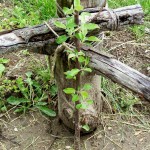
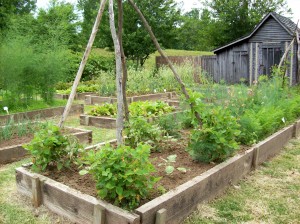
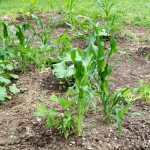
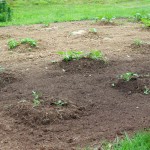
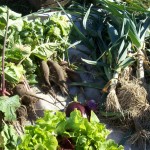
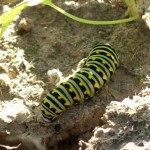
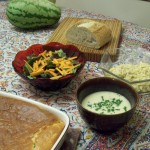
Recent Comments